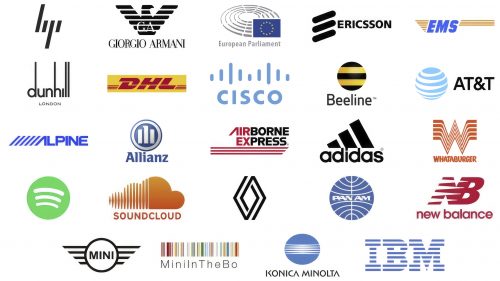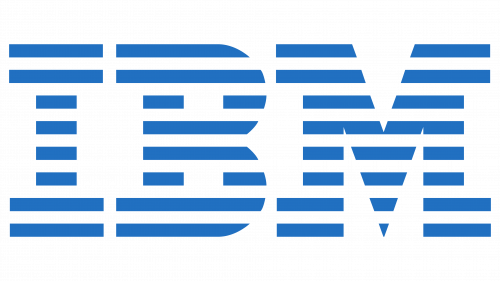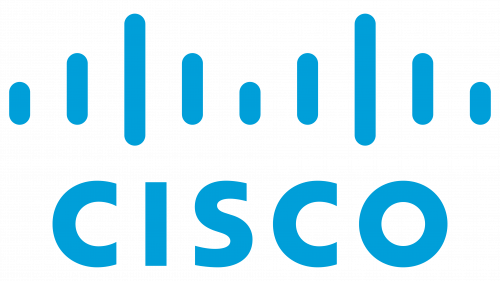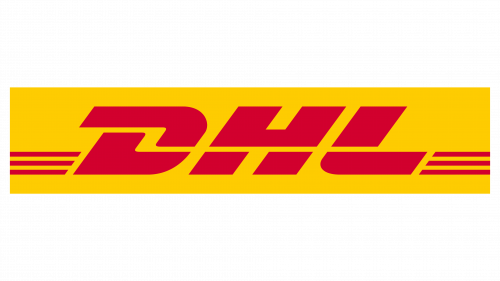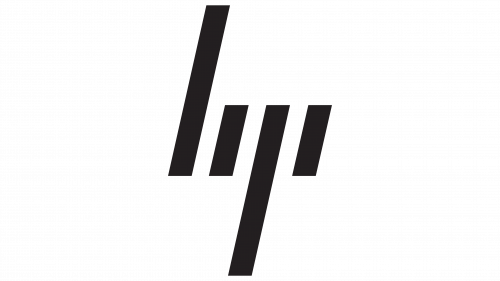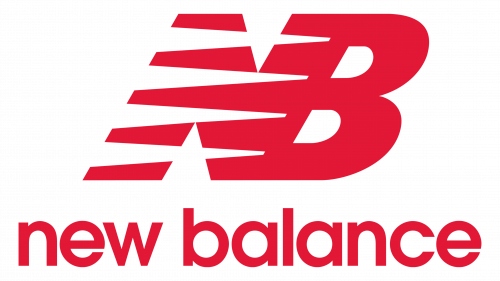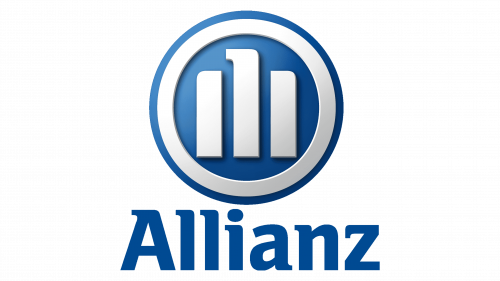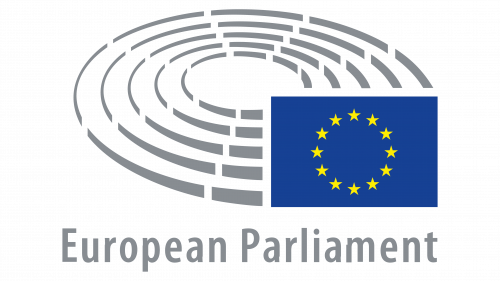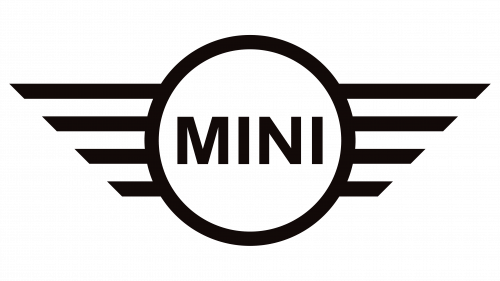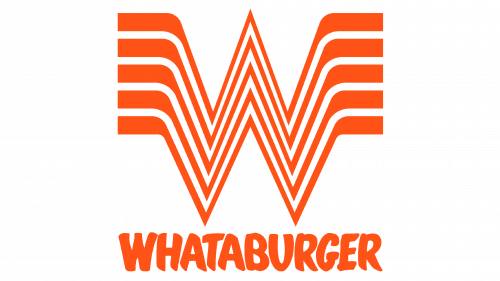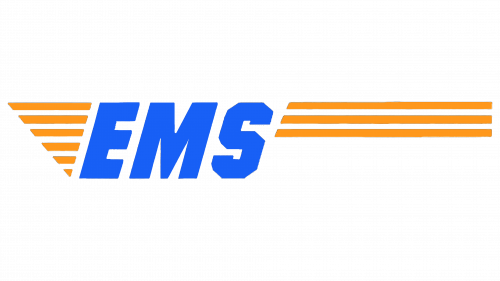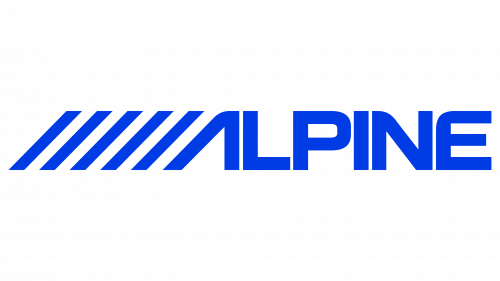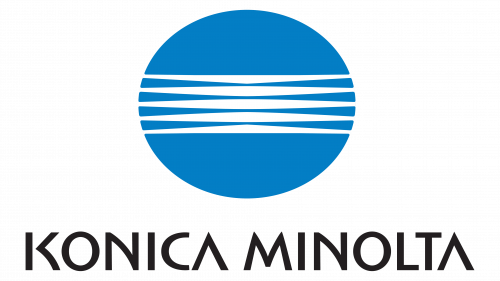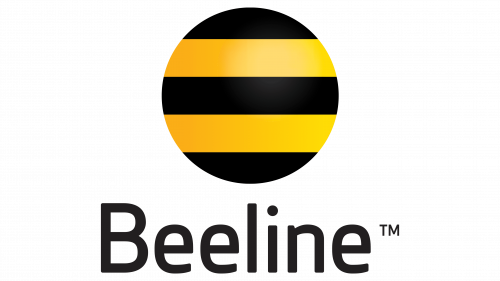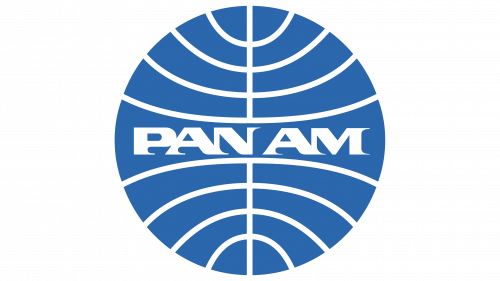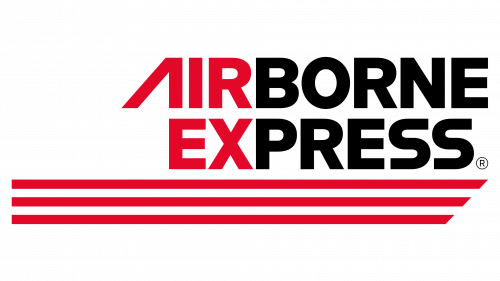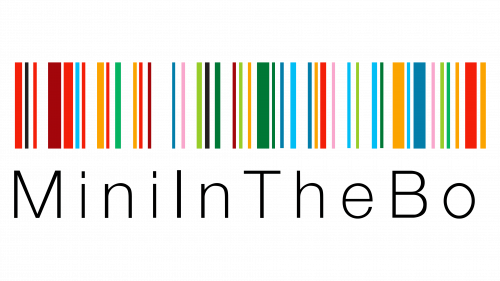Logos that use lines are special because they show how something simple can be powerful and beautiful. These logos use straight, curvy, or even a bit wiggly lines to make a picture telling us what a brand is about. They’re liked a lot because they look clean, are easy to spot, and can fit anywhere from a tiny phone screen to a huge billboard without getting all muddled up.
The neat thing about these line logos is they’re like a secret language. They can show movement, feelings, or even how steady and reliable a brand is, just with the lines’ shapes and how thick or thin they are. And the best part? They don’t get old. While other logos might follow what’s trendy and then look outdated, line logos keep looking good year after year.
Choosing the right logo is super important. It’s usually the first thing people see from a brand, so a good logo can say a lot with a little. Its lines can show whether a brand is about being professional and reliable or creative and fun. It helps a brand stand out and makes people remember it. Plus, if people like the logo, they’ll feel a stronger connection to the brand, which is great for the brand.
Some famous logos with lines include the straightforward IBM logo, which looks fast and modern; Adidas, with its three stripes that make us think of climbing mountains and achieving goals; Coca-Cola, which uses flowing lines to make us feel happy and refreshed; Nike’s swoosh, which is all about speed and winning; and FedEx’s arrow, which suggests moving forward and precision.
In short, logos with lines are a cool way to show what a brand is about without getting too complicated. They prove that sometimes, keeping it simple is the best way to go. Making a logo is about figuring out what the brand wants to say and finding the simplest way to show that with lines.
IBM
IBM started back in 1911 by making time-keeping and computing devices. Over the years, it grew into a big name in technology. Its logo, designed by Paul Rand in 1972 with eight stripes to look like “IBM,” is smart. It shows how fast technology moves and how IBM helps improve things in the computer world. The design also cleverly uses space to show IBM’s smart way of solving tough problems.
IBM began with Herman Hollerith’s invention, which helped count census data faster in the late 1800s. This led to the creation of a company in 1911, which turned into IBM in 1924 under Thomas J. Watson Sr.’s leadership. This was the beginning of IBM’s expansion into different tech products.
Some big moments for IBM were making electric typewriters, time clocks, and a very important computer called the System/360 in the 1960s. In 1981, IBM made a personal computer that changed how businesses and people use computers. Even when keeping up with fast technological changes, such as the internet, which was tough in the 1990s, IBM kept moving forward, focusing on helping businesses with technology, software, and advice.
Now, IBM is a leader in cloud computing, artificial intelligence, blockchain, and quantum computing, with over 345,000 people working for it. It’s worth over $100 billion and is still focused on improving computing for businesses and science. Its logo stands for its ongoing push for new, faster, and better ways to handle information in our digital world.
Cisco
In 1984, Leonard Bosack, Sandy Lerner, and their team at Stanford University started Cisco Systems. This important event began the journey of a company that would play a big role in building the Internet. Cisco’s logo, which resembles the Golden Gate Bridge, shows its connection to San Francisco and its goal to help people communicate using technology. The simple but meaningful design shows how Cisco makes technology easier to understand.
Cisco took a big step by creating a special router that helped different computer networks talk to each other. This was key to making the internet as we know it today. In the 1990s, under a new leader, John Morgridge, Cisco grew a lot. It was very important during the early days of the internet, handling most of its traffic at one point. Even though the company faced challenges when the dot-com bubble burst, it continued expanding into new areas like cybersecurity and smart cities.
Cisco has over 75,000 workers worldwide, makes about $50 billion annually, and works in over 100 countries. Its success shows how dedicated Cisco is to making technology that helps connect people and offers new possibilities, all represented by a logo that reflects its roots and goals.
Spotify
Spotify was created by Daniel Ek and Martin Lorentzon in 2006 in Stockholm, Sweden. It was a big change for digital music. Spotify made it easy for people to legally listen to music and podcasts, helping to stop music piracy. Its bright green logo has a special design that looks like sound waves. This shows how music connects people everywhere. The logo fits well with Spotify’s goal to make listening to music and podcasts fun for everyone.
Spotify started with the big idea of changing how we listen to music. It took two years to get everything ready, including getting the rights to the music. In 2008, it launched in Europe with a free service that shows ads and a paid service without ads. This helped it grow fast. By the end of 2012, Spotify had 20 million users and 5 million paid subscribers.
Over time, Spotify reached more countries like Australia, New Zealand, and the United States. It added features like artist radio stations, playlists you can make with friends, podcasts, and audiobooks. When Spotify went public in 2018, it showed it was a big name in streaming music.
Now, Spotify is the top place to stream music and audio. It keeps its promise to make music fun and available to everyone. The logo reminds us of Spotify’s creativity and how it makes finding new music and podcasts exciting.
Adidas
In 1924, Adolf Dassler started making sports shoes in his mom’s laundry room, and that’s how Adidas began. It became a huge deal in sports clothes, especially after he and his brother Rudolf, who started Puma, decided to go their separate ways in 1949. Adidas got its name from Dassler’s nickname, Adi, and part of his last name. This was the start of Adidas becoming a big name in sports.
One of Adidas’s biggest moments was in 1954 when the German soccer team won the World Cup wearing their shoes. This win made Adidas famous around the world. In the next decades, many athletes chose Adidas for their quality and cool designs. One of their famous shoes is the Stan Smith tennis shoe.
The three stripes on Adidas gear, which started as a way to make shoes more stable, are now known worldwide. They stand for how the brand supports athletes in facing challenges and doing their best. The logo looks like a mountain, representing athletes’ hard work to be great.
Adidas grew bigger by selling stuff in America and Asia and buying other companies like Reebok. Even though it has big competitors like Nike, Adidas is still one of the top sports brands, worth over $16 billion today. It’s still based in a small town in Germany where it all started. Adidas has been all about sports, making cool stuff for athletes, and pushing to improve for almost a hundred years.
SoundCloud
SoundCloud was started in 2007 in Stockholm, Sweden, by Alex Ljung and Eric Wahlforss. They wanted to create a place on the Internet where musicians could easily share music and talk to their fans. It’s a website where anyone who makes music or podcasts can upload their work for others to listen to. From the beginning, people liked using different music because sharing their sounds with the world was simple. Soon, many people were using SoundCloud, and even big music companies started noticing.
By the early 2010s, millions of people were using SoundCloud, and it got money from investors to grow bigger. But, like any company, it had some money troubles, especially when it started to let people stream music like other apps. It had to let some of its workers go in 2017, but it managed to keep going with more money from new investors.
Now, SoundCloud is a big deal in music. Based in Berlin, it has over 250 million songs from 30 million artists and reaches 200 million people monthly. It’s a place where new musicians can get noticed.
The SoundCloud logo looks like an orange sound wave, which is smart because it shows what the site is all about—listening to different sounds. This logo is like a picture of what sound looks like when you record it, showing how SoundCloud is all about different sounds and music.
AT&T
AT&T is a big company that has existed since the late 1800s. It started with Alexander Graham Bell, who invented the telephone and has grown significantly since then. The company has always made it easier for people to talk to each other, no matter where they are. Their logo, which has a picture of the globe with lines that look like connections, shows how they help connect people everywhere.
In the beginning, AT&T was just one company, but in 1982, it had to break into smaller companies because of a court decision. One of these smaller companies, Southwestern Bell, changed its name to SBC Communications and started buying other companies to get bigger. It even bought the original AT&T company and took its name. Over the years, AT&T kept growing by buying more companies like BellSouth, DirecTV, and Time Warner. Now, it’s not just about phone calls; it’s also about the internet, TV, and other tech stuff.
Today, AT&T is known worldwide. They offer mobile and internet services to millions of people. Their logo, with the globe and network lines, shows that they’re all about making it easy for people to share information and stay connected. AT&T’s goal is to ensure that no matter how far apart people are, they can easily talk, share, and get information, making the world feel smaller.
DHL
DHL was started in 1969 by Adrian Dalsey, Larry Hillblom, and Robert Lynn, whose names come from their initials. They were from San Francisco and had a new idea to send packages faster by using passenger planes to travel to other countries. This made DHL grow quickly and become known for being fast and reliable.
In the 1970s, DHL expanded by going to different continents and using technology like computers to track packages, improving its service. By the 1980s, it was so good that it moved its main office to Germany and started to do more than just send packages. It also began helping with bigger shipping tasks.
Between 1998 and 2002, a big company named Deutsche Post bought DHL, making it part of a larger group. This change helped DHL do even more, like shipping by train and sea, which helped it grow in the world market.
In 2019, DHL celebrated 50 years. They have come a long way, from a small package service to a big name in shipping and logistics. They even started looking into using drones to deliver packages and focused on helping people sell things online.
DHL’s logo is easy to spot with its big red letters on a yellow background. It looks sharp and clear, showing that DHL is all about being fast, dynamic, and reliable. The design of the “DHL” letters stands for the company’s promise to deliver things quickly and accurately.
HP
HP Inc. is a big name in technology, known for making all sorts of tech products that people and big companies use. Their logo has the letters “HP” in a simple, diagonal style, showing they’re all about new ideas and cool designs. This logo tells us HP is serious about making and doing new tech well.
In 1939, two friends named Bill Hewlett and Dave Packard started HP in a garage in Palo Alto with just $538. They first made electronic test devices. As years went by, they also made calculators, computers, and printers, which were important back then. They even made the first desktop laser printer.
HP grew significantly in the 1980s and 1990s, and it is especially known for its printers and computers. In the 2000s, it bought other companies, like Compaq and Palm, which helped it become the top PC maker by 2007.
Later, HP split into two companies. HP Inc. kept making PCs and printers, while another company focused on bigger tech like data centers. Now, HP Inc. is still doing great with PCs, printers, and new things like 3D printing, showing it can keep up with changing tech.
New Balance
New Balance is a big name in sports shoes and clothes. They’re known for always trying new things and making their products well. Their logo is a simple “N” that looks sharp and shows they’re all about moving forward and doing better in sports. This “N” isn’t just a letter; it shows how much New Balance cares about making high-quality stuff for athletes.
The company was started in 1906 in Boston by a guy from Britain named William J. Riley. It first made things like arch supports to help people’s feet feel better. In the 1930s, they started making sports shoes, and by 1961, they were all about giving runners the best shoes that fit well. This special attention to making perfectly fit shoes helped them stand out when more people started jogging in the 1970s.
Jim Davis and his wife Anne took over in 1972 and made New Balance a big deal in sports and everyday fashion. They kept making their shoes in the U.S., offered them different widths for the best fit, and combined sports features with a cool look.
Today, New Balance is among the biggest sports brands. The Davis family still runs it in Boston. New Balance continues to focus on innovation and making top-quality sportswear.
Ericsson
Ericsson is a big company that works with communication technology, helping people worldwide talk to each other more easily. Their logo has three simple lines that focus on creating new things and making the future more connected.
The company started in 1876 in Stockholm, Sweden when Lars Magnus Ericsson began fixing telegraph machines. Soon, they started making their telephones. Ericsson quickly grew, selling its products in Russia, Europe, and then all over the world. It made many smart inventions, like the Ericofon, a cool phone from 1934. It was also a pioneer in mobile phones, making a big leap in 1963 with a special system for mobile calls.
During the 1980s and 1990s, Ericsson played a big part in making mobile phone systems that many people use today. They worked on technologies that made the Internet faster and more reliable. In 2012, they focused only on making and improving network systems for phones and the Internet, leaving the mobile phone business behind.
Now, Ericsson is one of the top companies in the world for 5G, the latest technology for mobile internet, covering over 40% of the world’s 5G networks. They work in more than 180 countries. From starting as a small workshop, Ericsson has become a key player in making the world more connected, showing how important it is to keep coming up with new ideas.
Giorgio Armani
Giorgio Armani, a famous fashion brand, was started in Milan, Italy, in 1975 by Giorgio Armani and Sergio Galeotti. It’s known for high-quality clothes, accessories, and beauty products that show Italian style. The logo has an eagle, meaning the brand is all about being excellent and lasting long in fashion.
Right from the start, Armani made clothes that people loved. In the late 1970s and early 1980s, they made suits perfect for the business world, making them very popular in America. They also started an Emporio Armani line for younger people who wanted stylish clothes at better prices. Giorgio Armani became very famous, even on Time magazine’s cover.
In 1985, Armani introduced a special line of fancy clothes called Giorgio Armani Privé. The 1990s brought more types of clothes under different names, reaching more people worldwide. By the 2000s, Armani was making over $2 billion and had started selling a lot in Asia, too.
Giorgio Armani wrote a book about his life in fashion in 2011, sharing his story of building the brand. Today, Armani is still a big name in fashion, and it is known for creating new styles and luxurious clothes that keep up with the times.
Renault
In 1899, the Renault brothers, Louis, Marcel, and Fernand, started a company called Société Renault Frères in France. Louis was responsible for designing and testing their cars. Renault quickly became famous in France, selling 602 cars by 1903. They kept making new things, like the first cars with a roof over where people sit, and by 1908, they made over 3,500 cars.
During World War I, Renault made things for the war, like weapons and airplane engines, which helped them earn more money. After World War II, they made a popular small car called the 4CV, selling over 500,000 by 1962. They also started making sports cars and helping people buy cars by offering loans when they bought Alpine in 1972.
In the 1980s, Renault worked with Volvo and started selling trucks in America by buying a company called Mack Trucks. In 1999, they merged with Nissan, making a big team working with other car companies like Dacia and Mitsubishi Motors. Renault and Nissan are now very important in Europe’s car market.
Renault’s logo is a diamond shape that shows the company is all about making new things and being great at engineering in France. The logo looks strong and points forward, which means Renault always wants to make better cars that look good and have the latest technology. This makes Renault stand out in the car world.
Allianz
Allianz was founded in 1890 in Berlin, Germany, to help people with accidents, health problems, and issues related to sea travel. In 1898, it began working in other countries, including Italy and kept growing in Western Europe. Even after tough times during the World Wars, Allianz grew again.
In the late 1900s, Allianz started to work in countries outside Europe, like the United States, by buying other companies. In the 1990s and 2000s, it also started to offer different types of financial services. The company bought Dresdner Bank in 2001 and OppenheimerFunds in 2008, showing it wanted to be a big player in financial services. By 2018, it was very important in Spain, too.
Now, Allianz is a big name in insurance and financial services, helping over 100 million customers in more than 70 countries. Its logo, a bird made of simple lines, shows its goal to protect and give freedom to its customers. This symbol means Allianz is there to keep its customers safe and give them confidence, no matter what happens.
European Parliament
The European Parliament is a big part of how the European Union (EU) works. It’s all about being open, working together, and sharing the same democratic ideas. The Parliament’s symbol shows a circle where all the countries in the EU come together, showing that even though they are all different, they work together to make decisions.
This Parliament started in 1952, right after World War II, as a way for countries to work together, especially on things like coal and steel, to help keep peace. It was first called the Common Assembly and then changed names a few times until it became the European Parliament in 1962. At first, it could only give advice, but it didn’t make the final decisions.
In 1979, things changed a lot because, for the first time, people from all over the EU could vote to choose who they wanted in the Parliament. This made the Parliament more important and powerful. Over the years, with new agreements like the Single European Act and the Maastricht Treaty, the Parliament got to have more say in big decisions, especially about money and laws.
The biggest change came in 2009 with the Lisbon Treaty, which made the Parliament just as important as the Council in deciding on many laws. Now, over 700 members of the Parliament speak for the people of the EU and help make important decisions.
Mini
Mini is a cool car brand from the UK that BMW has owned since 2000. It’s known for making small cars that are fun to drive and look great. The Mini logo is simple but stylish. It has the word “Mini” in a simple font and a circle around it, which shows how Mini combines old and new ideas to make cars that work well and look good.
The first Mini was made in the late 1950s because Britain didn’t have much fuel, and people needed a car that didn’t use much gas. Sir Alec Issigonis designed it to be small but still have room for people and their stuff. The Mini was a big hit and became famous in movies like “The Italian Job” in 1969, where it was shown as a fun and cool car.
Even though the original Mini stopped being made in 2000, BMW brought it back in 2001 with a new look that still remembered the original car. These new Minis are made in England and keep the small size and style of the old ones but with modern features that make them even better to drive.
BMW also made new types of Minis like the Clubman, Countryman, and even fast versions called John Cooper Works. These new models, plus the option to customize them, have made Mini a popular brand worldwide. The Mini logo, with its simple and smart design, reminds people of the car’s rich history and blend of fun and practicality.
Whataburger
In 1950, Harmon Dobson and Paul Burton opened a small Whataburger stand in Corpus Christi, Texas. They wanted to make it so good that people would say, “What a burger!” when they ate it. And that’s exactly what happened. Whataburger became famous for making big, tasty burgers you could have made just as you like.
The Whataburger logo looks friendly and welcoming, inviting you to come in for a warm, tasty meal. It’s designed to make you feel good, just like their food.
Whataburger grew from one little spot by the road to a big chain loved by many. In the 1960s, it got bigger in Texas by ensuring everything was fresh and made to order, which was pretty special back then. In the 1970s, they started using orange and white stripes in their design, which stood for good food and making customers happy.
After Harmon Dobson passed away, the company was sold to an investment group in 1996, which helped it grow even more. Now, Whataburger has over 800 spots in 10 states and introduced new favorites like the Honey Butter Chicken Biscuit. In 2019, BDT Capital Partners bought a big part of Whataburger, but it stayed true to its Texas roots. With over 43,000 people working for them, Whataburger is a big success story about making great food and sticking to a simple idea.
EMS
EMS started in 1998 with the help of the Universal Postal Union to make sending mail around the world faster and more reliable. It quickly became popular, and by 1999, over 60 countries were using EMS for express mail services, all working together under one brand.
In the 2000s, EMS grew by adding more countries to its network and improving its service with delivery promises and better tracking. In the 2010s, EMS introduced new options like EMS Premium and EMS Standard to meet different needs, and by then, over 190 countries were part of EMS.
In 2015, EMS started a certification program with Gold, Silver, and Bronze levels to maintain high-quality service everywhere. Despite the challenges caused by COVID-19 in the 2020s, EMS kept going strong. They updated their systems to handle online shopping and customer service better, connecting over 200,000 routes between countries.
The EMS logo, with its lines making a picture of an envelope or wing, shows how fast and far-reaching their service is. It’s a symbol of EMS’s promise to bring people closer, no matter where they are.
Alpine
Since its start in 1967, Alpine has made great car audio and navigation systems. It began as a team-up between a Japanese company called Alps Electric and an American company, Motorola. They first called it Alps-Motorola but changed to Alpine Electronics in 1978. In the 1980s, they made cool stuff like new radio systems and car CD changers, making them popular.
In the 1990s, Alpine started making maps for cars, too, and then they moved on to maps on DVDs in the 2000s. They kept growing, adding new tech like Apple CarPlay, which lets you use your phone with the car’s screen and speakers. Big car brands like BMW and Mercedes chose Alpine to put their tech in new cars because they trusted Alpine’s quality.
In 2012, Alpine joined back up with Alps Electric but kept doing its own thing, making awesome sound systems and car maps. Their logo has a special “A” that looks like it’s moving forward, showing that Alpine is all about new ideas and making sounds in cars as good as possible.
Dunhill
Dunhill, founded by Alfred Dunhill in the early 1900s, started in London as a small shop but grew into a famous luxury brand for tobacco products. Dunhill’s logo is fancy, showing how much they care about making high-quality tobacco.
Alfred Dunhill first opened a shop 1893 selling car accessories but added tobacco pipes to his shop in 1907. Tobacco pipes and luxury leather goods became a big part of Dunhill’s identity. By 1910, Dunhill had stores in London and Paris, starting its journey as an international brand. Alfred’s son took over in 1917 and helped the brand grow, especially in the 1920s, when Dunhill became known for luxury items like leather goods, pipes, and men’s fashion.
In 1971, Rothmans International bought Dunhill, starting a new chapter. Dunhill’s image had to be updated over the years to stay modern. Then, in 1993, Richemont bought Dunhill, making it part of a group of luxury brands. Today, Dunhill is a top luxury lifestyle brand with stores worldwide, known for its menswear, leather goods, and more.
Konica Minolta
Konica Minolta is a big company that works with office machines, things for doctors like X-ray machines, and camera stuff. They are known for making new things that help people do their jobs better. Their logo is blue and has a picture of the world made of lines and shapes, showing they work all over the globe to make technology better for everyone.
This company started a long time ago in Japan with two separate companies, one in 1928 making cameras and the other making things for photos. They made the first camera that could focus by itself in 1962. Later, both companies became good at making cameras and photo stuff that people worldwide liked.
In 2003, these two companies joined together to become Konica Minolta. This was a big deal because they could make even cooler things, like digital cameras, printers for offices, and machines that help doctors see inside our bodies. A few years later, they bought some other companies to help them sell more things in places like the United States and Australia.
Now, Konica Minolta is a huge name when it comes to printing and imaging, with thousands of workers all around the world. They keep trying to make new technologies that connect people and make it easier to share information and images, no matter where they are.
Beeline
Beeline is a company in Russia that helps people talk on the phone and use the internet. It started in 1993 and got its name in 1996 because it wants to make talking to each other simple and straight, like the path of a bee. The yellow and black logo has a fun picture of how bees fly, showing that Beeline works hard to keep everyone connected smoothly.
From the start, Beeline grew fast and became Russia’s third-biggest mobile phone company. In 2010, Beeline joined Ukraine’s top mobile company, Kyivstar, and became even bigger. Then, in 2011, they made a deal with Wind Telecom to work in North Africa and the Middle East.
In 2013, Beeline decided to use the same name for all its businesses worldwide, but it kept some local names in certain places, like Russia. Beeline is one of Russia’s top three mobile phone companies, and many people use it. In 2022, the company that owns Beeline changed its name to Veon, but in Russia, the Beeline name is still used because it’s well-known and shows the company’s focus on new ideas in talking and internet services.
Panam
Pan American Airways was a big airline that started in Florida in 1927. It began by carrying mail from Key West to Havana, Cuba, using planes that could land on water. The next year, a man named Juan Trippe became the president, and he helped the airline grow a lot by adding more routes in Latin America and the Caribbean. This growth helped Pan Am start flying people to Europe in 1935 and to far places like New Zealand. They used big flying boats called “Clippers” for these long trips.
After World War II, Pan Am was known as the top airline for flying to other countries. They started the first flight around the world in 1945 and introduced tickets for a trip worldwide in 1948. In 1958, they began using jet planes, making flying faster and adding cheaper seats so more people could travel.
But Pan Am had some tough times, too. In 1976, one of their planes was bombed. This, along with money problems, led to the airline’s closing down in 1991. Delta Air Lines ended up buying what was left of Pan Am.
The Pan Am logo shows lines resembling their planes’ flight paths worldwide. These lines represent the planes’ trips and the stories of the people who flew with them. Pan Am is remembered for making it easier for people to explore the world and connect with others, even though it’s not around anymore.
Airborne Express
Airborne Express started in 1946, mainly shipping fresh flowers from Hawaii to the mainland US. It was first called the Airborne Flower Traffic Association of California. Over the years, it grew and started delivering small packages to different cities in the US by 1952. In 1968, new owners changed the company also to deliver overnight letters and packages.
By 1980, Airborne focused on delivering things for businesses and could reach 90% of places in the US. In 1988, a big company named CSX bought Airborne, making it even bigger. In the early 1990s, Airborne promised to deliver packages overnight, especially to big cities, competing with big companies like FedEx.
But by 2003, things got tough for Airborne Express. It had to stop flying and sell its delivery business to DHL, marking the end of Airborne Express in the delivery world.
The company’s logo showed it was fast and good at delivering things by air. Bold letters leaning forward with a wing-like design showed it was about quick air delivery. This logo was a big part of Airborne’s image, showing it was a modern and efficient delivery service.
Mini In The Box
Mini In The Box started in Yiwu, China, in 2006 with a big idea: to make online shopping for small things like toys, gifts, and gadgets easy and fun, mostly with items from China. They didn’t stick to just small items for long, though. Soon, they added electronics, things for the house, and clothes to their list, reaching more people.
By 2009, they had a lot more stuff to sell, and in 2010, they made special websites for US and European customers. This showed they were serious about bringing their products to people worldwide. By 2012, over a million customers had bought something from them, showing they were good at finding cool things people liked.
Leading up to 2015, Mini In The Box improved its service even further. It made it easier to pay and ship things to different parts of the world and kept growing its storage space. Now, it sends products from over 5,000 brands to more than 100 countries, making it a big deal in online shopping worldwide.
Their logo is fun and friendly, with bright colors and a picture of an open box. This shows how exciting it is to get something new to open. Their logo and what they do are all about making shopping online a happy and surprising experience with every package you get.
FAQ
Can the simplicity of lines in a logo contribute to its iconic status?
Yes, the simplicity of lines in a logo can significantly contribute to its iconic status. This simplicity offers a clean, memorable look that people can recognize and remember. Here’s why simple line logos often become iconic:
- Easy Recognition: Line logos are clear and direct, making them quick for our brains to process and recognize, even from far away or when they’re very small.
- Memorable Design: Because they’re not cluttered with too many details, logos with simple lines stick in our minds more easily. This helps people remember the brand better.
- Versatility: Simple line logos work well in any size and platform, from a tiny logo on a watch to a huge billboard. This adaptability helps the logo be seen and recognized in many places.
- Timelessness: Logos with simple lines avoid trendy designs that might look dated in a few years. This means they can stay relevant and fresh for a long time, helping the brand maintain a consistent identity.
- Symbolic Power: These logos can symbolize the brand’s values and mission, even with just a few lines. A single line can suggest speed, reliability, connection, or innovation depending on how it’s drawn.
Icons like the Nike swoosh, the Apple Apple, and the McDonald’s arches show us how powerful simple line designs can be. They all use straightforward shapes to create a strong impression. Because these logos are so simple and clear, people can recognize and remember them easily, which is a big part of becoming iconic.
Which brands use lines in their logos to signify movement?
Brands that use logos to signify movement aim to convey dynamism, speed, and progress. Here are a few iconic examples:
- Nike: The Nike swoosh is perhaps one of the most famous examples. This simple curved line represents motion and speed, perfectly capturing the essence of the athletic and active lifestyle that Nike promotes.
- Adidas: The three stripes of Adidas, while simple, suggest forward movement and improvement, aligning with the brand’s focus on performance and progress in sports.
- FedEx: The FedEx logo cleverly incorporates an arrow between the letters ‘E’ and ‘x,’ symbolizing speed, precision, and the dynamic nature of their delivery services.
- BMW: Although primarily known for its circular design, the BMW logo suggests movement through its alternating white and blue sections, often interpreted as a spinning propeller, paying homage to the company’s history in aviation.
- Amazon: The Amazon logo features a smile from A to Z, resembling an arrow. This design represents their wide range of products and the quick, efficient service they aim to provide, indicating movement and forward progression.
These brands effectively use lines in their logos for aesthetic appeal and to communicate their commitment to movement, progress, and speed, resonating with their target audiences’ aspirations and values.
How do lines in a logo influence consumer brand recognition?
Lines in a logo are special because they can tell us a lot about a brand without using words. They’re like the secret sauce that makes a logo stand out and stick in our minds. Here’s a simple breakdown of why lines are so important:
- Showing Action and Energy: Lines can make it look like a logo is moving. This can make a brand seem energetic and ready to go forward. For example, lines going up can make us think of a brand growing or succeeding.
- Making Us Feel Something: The way lines are drawn can make us feel certain ways. Straight, sharp lines might make us think a brand is all about being on time and doing things right. Curvy lines might make us feel that a brand is friendly and fun.
- Looking Good: Lines help make logos look nice and clear, which means more people will notice them. A logo that’s easy on the eyes is more likely to be remembered and recognized, whether on a tiny phone screen or a big sign on the road.
- Telling a Story: Lines can be used to tell a story or show what a brand is all about. For example, fast lines can make us think of speed and getting things done quickly, which might be perfect for a tech company.
- Keeping It Consistent: Because lines are simple, they can be used everywhere without losing what makes them special. This means that no matter where you see the logo, it looks the same, helping you remember and recognize the brand better.
So, lines in a logo aren’t just there to make it look pretty; they work hard to show off what a brand is all about, make us feel certain ways, and help us remember it better. It’s all about using those lines correctly to connect with people and tell the brand’s story.
What famous logo has three lines?
The Adidas logo is famous for incorporating three lines in its design. This iconic symbol, often referred to as the “three stripes,” is designed to represent a mountain, symbolizing the challenges and obstacles that athletes must overcome. The simplicity and distinctiveness of the three stripes have made the Adidas logo one of the most recognized symbols in the world of sports apparel and footwear.
